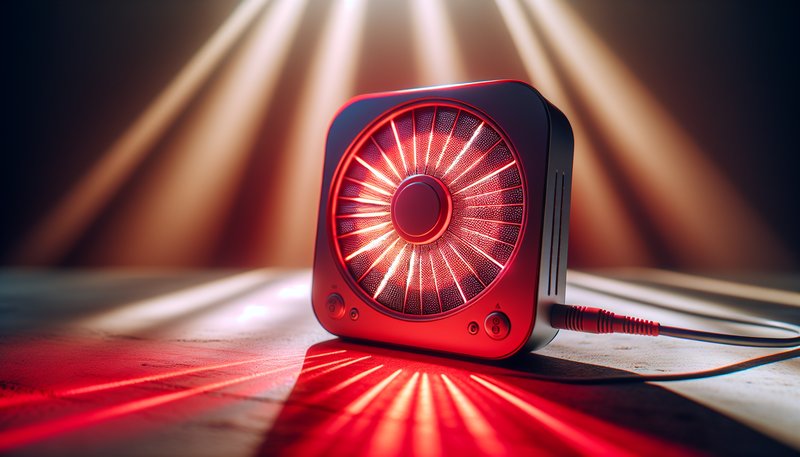What Is Red Light Therapy For Pain?
Have you ever wondered if there’s a non-invasive way to alleviate pain?
Red light therapy (RLT) has gained popularity in recent years as a potential treatment for various types of pain. This article explores red light therapy, its benefits, specific actions, considerations, alternatives, and answers to frequently asked questions.
Key Takeaways
- Red light therapy uses low-level wavelengths of red light to reduce inflammation and promote healing.
- Many users report significant pain relief and improved mobility after undergoing RLT.
- While well-tolerated, it’s important to consider individual circumstances and medical advice before starting treatment.
What is Red Light Therapy?
Red light therapy, often referred to as low-level laser therapy (LLLT) or photobiomodulation, involves exposure to specific wavelengths of light, primarily red and near-infrared light. These wavelengths penetrate the skin and stimulate cellular processes that can lead to pain relief, reduced inflammation, and accelerated healing.
Originally developed for use in medical settings, RLT has expanded into home therapy devices, making it accessible for personal use. Understanding how this therapy works can provide insight into its therapeutic potential.
The mechanism behind red light therapy revolves around light absorption by the mitochondria, the powerhouse of cells. This absorption stimulates ATP (adenosine triphosphate) production, enhancing cellular energy and function. The stimulation can lead to increased circulation, reduced oxidative stress, and improved tissue repair.
What are the Benefits of Red Light Therapy?
Exploring the benefits of red light therapy sheds light on why it’s considered an effective option for pain management and overall health.
Pain Relief
One of the most cited benefits of RLT is its ability to alleviate pain. Studies have shown that it can relieve chronic conditions such as arthritis, tendonitis, and even acute pain from injuries. Users often report significant decreases in pain levels a few sessions into their RLT treatment.
Reduced Inflammation
RLT has also been linked to a decrease in inflammation. The therapy works by modulating the activity of inflammatory cells, leading to a reduction in swelling and discomfort. This can be especially beneficial for individuals with inflammatory conditions such as fibromyalgia or chronic pain syndromes.
Improved Tissue Recovery
The stimulating effects of RLT can enhance recovery processes in tissues. This aspect is crucial for athletes and individuals recovering from surgeries or injuries, as RLT can speed up healing times and improve overall function.
Get insights from How many red light therapy sessions needed?
Enhanced Mood and Well-Being
Interestingly, beyond physical benefits, many patients report improved mood and well-being after RLT sessions. The combination of pain relief and improved mobility contributes positively to mental health, particularly for those struggling with depression linked to chronic pain conditions.
Is it Possible to Use Red Light Therapy at Home?
With the advent of affordable and user-friendly devices, many individuals wonder whether they can safely use red light therapy at home. Indeed, at-home devices are available and generally easy to use.
What are the Advantages of At-Home RLT?
Convenience is a primary advantage of at-home red light therapy. Users can integrate sessions into their daily routines without needing appointments or travel. Many devices are designed with user safety in mind, often featuring built-in timers or auto shut-off functions.
What are the Disadvantages of At-Home RLT?
While at-home devices offer convenience, they may not provide the same power or effectiveness as professional treatments. Users might also lack professional guidance for proper use, potentially leading to ineffective or improper treatment applications.
What are the Things to Consider Before Starting RLT?
Before diving into RLT, consider several important factors to ensure the best results and safety.
Medical Conditions
Discuss any pre-existing medical conditions with a healthcare professional. Conditions like photosensitivity or certain skin types may contraindicate the use of red light therapy.
Device Quality
Investing in a high-quality device is crucial. Look for reputable brands with proven efficacy and customer reviews. Cheaper devices may not deliver the benefits you expect.
Consistency of Treatment
For optimal results, consistency is key. Users should plan for regular sessions over a designated period, as sporadic use may not yield significant improvements.
What are the Alternatives to Red Light Therapy?
If red light therapy isn’t the right fit for you, there are several alternative treatments for pain management.
Physical Therapy
Physical therapy can provide personalized exercises and modalities like ultrasound therapy, which help in pain relief and mobility improvement. This approach often involves a professional evaluating and designing a program tailored to individual needs.
Acupuncture
Acupuncture is an ancient practice that utilizes fine needles inserted into specific body points to promote healing and alleviate pain. Many individuals report effective relief from chronic pain and tension through this technique.
Application of Heat or Cold
Using heat, such as heating pads, or cold treatment, such as ice packs, can be effective for managing pain. Heat relaxes muscles and improves circulation, while cold reduces inflammation and numbs sharp pain.
Conclusion: Is it Recommended to Try Red Light Therapy?
In conclusion, red light therapy presents a promising option for pain management, offering a range of benefits, from pain relief to improved healing. While many find RLT helpful, individual experiences may vary. Before starting, consider medical advice, device quality, and consistent application. Ultimately, red light therapy could be an effective addition to a comprehensive pain management strategy.
Frequently Asked Questions
What conditions can red light therapy help with?
Red light therapy is known to aid in conditions like arthritis, tendonitis, muscle pain, and even post-surgical recovery.
How often should I use red light therapy for optimal results?
For best results, most users aim for 3 to 5 sessions per week, depending on the severity of their condition and personal goals.
Read our thoughts on Best Uses of Red Light Therapy
Is red light therapy safe?
Generally, red light therapy is considered safe with minimal side effects. Some users may experience temporary redness or sensitivity, which typically resolves quickly.
Can I use red light therapy along with other treatments?
Yes, many individuals use RLT alongside other therapies like physical therapy or medications. However, consult a healthcare professional to ensure compatibility.
How long does it take to see results from red light therapy?
Results can vary, but many users report improvements within a few sessions, while others may require weeks of consistent treatment for significant changes.






